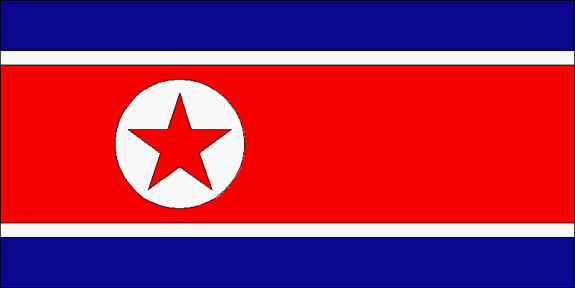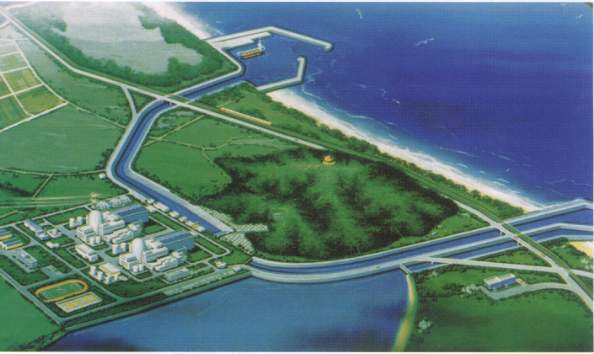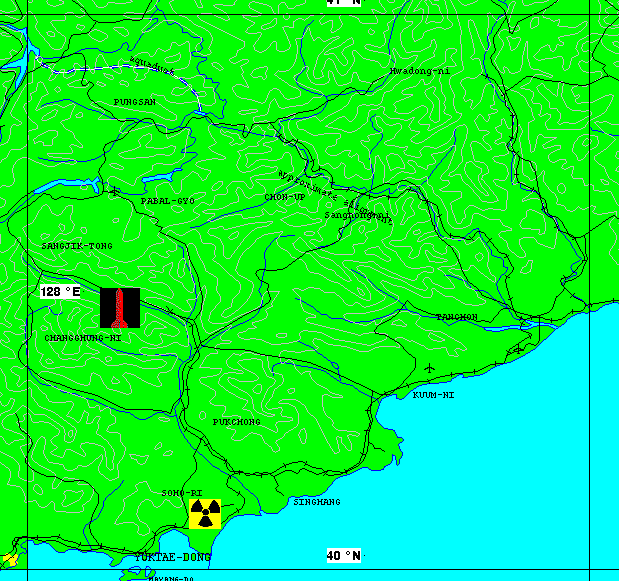





In a 1994 agreement with the United States (the "Agreed Framework"), North Korea agreed to freeze its nuclear program in exchange for two new pressurized light-water reactors (which are considered less capable of producing weapons-grade plutonium) and 500,000 metric tons per year (about 3.3 million barrels) of heavy fuel oil to meet its energy needs until the new reactors become operational. The Korean Peninsula Energy Development Organization (KEDO), an international consortium led by the U.S. government (with South Korea and Japan), was established to implement the agreement. The European Union joined KEDO in September 1997. The construction of the light water reactors is to be performed under a contract with the Korean Electric Power Corporation (KEPCO), the South Korean utility.
Japan signed a contract in May 1999 committing to provide its $1 billion contribution to KEDO to fund the new light-water reactors, an action which had been delayed by North Korea's missile test in August 1998. The project is expected to cost a total of $4.6 billion, with South Korea providing the greatest share of funding at $3.2 billion. The United States and the European Union have also pledged to contribute funds.
Lying 50 kilometers north of Hungnam, Kumho-ri in Sinpo, a port city on the country's eastern coast, is the project site for the new atomic plants to be built by KEDO. It is within three kilometers of the sea, with a population of only 5,000 within a radius of three kilometers, and has an accessible water supply from the nearby Namdaechon River.
In 1985-6 the Soviet Union announced that it was building a nuclear power plant in North Korea, variously reported as either a 400-megawatt-class reactor or a 1,760-megawatt reactor. The Soviet project was said to be part of an effort to persuade North Korea into joining the International Atomic Energy Agency (IAEA) . According to South Korean sources, the construction of the plant began in 1990 in the Sinp'o District. Construction of the plant, originally targeted for completion in 1992, was terminated because of pressure exerted by the IAEA and termination of assistance from the former Soviet Union, which was burdened with its own economic difficulties.
The KEDO nuclear power plant construction site is located 30 km north of Sinpo, South Hamgyong Province, on the east coast of the DPRK. The climate is dry and much cooler in the summer than Pyongyang or Seoul, and the winter weather is moderated by the location near the ocean. The site is very rural; although there is some marginal farmland, much of the area is sand and scrub pines. There is a variety of small wildlife, including rabbits, deer and pheasants, and fish are plentiful in the streams near the site.
KEDO�s office at the LWR project site in Kumho, DPRK, is responsibile for interfacing with the DPRK to ensure the smooth and expeditious implementation of the LWR project, maintaining order at the site and ensuring the safety of all KEDO persons, exercising all consular protection functions on behalf of all KEDO persons in the DPRK, and overseeing the day-to-day implementation of the project, including coordination of contracts between KEDO�s contractors and subcontractors and a DPRK company responsible for the provision of DPRK labor, goods, facilities and other services.
The small KEDO community supports a wide range of services, including two restaurants, a medical clinic, stable water and electricity supplies and a sanitary system. Recreational facilities include a videotape library, golf driving range, tennis and basketball courts and a soccer field. Religious groups hold regular services and holidays (such as Christmas, Easter, and Buddha�s Birthday) are marked with special celebrations. Satellite television service is available, predominantly broadcast and cable channels from the Republic of Korea. Although there is no commercial telephone service between the ROK and the DPRK, there are four leased lines from the site to the south that are operated as a dial-up service by Korea Telecom in Seoul.



